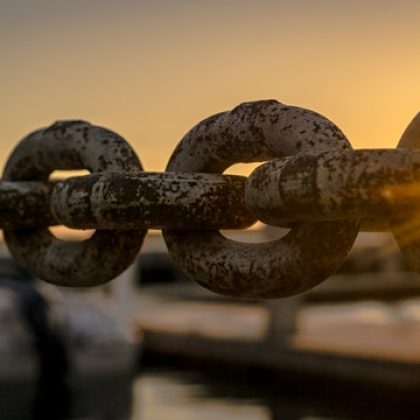The ‘Conflict Minerals Regulation’ or the ‘Regulation on Responsible Sourcing of Minerals’: Evolving Purpose and Terminology
On 1 January 2021 the ‘Regulation (EU) 2017/821 laying down supply chain due diligence obligations for Union importers of tin, tantalum and tungsten, their ores, and gold (3TGs) originating from conflict-affected and high-risk areas’ (CAHRAs) came into force. The law is often referred to as the ‘EU Regulation on Conflict Minerals’ by civil society, companies and public officers. Through an examination of the evolution of the Regulation and responsible sourcing terminology, this piece argues in favour of a shift in this language commonly used to refer to Regulation 2017/821, encouraging stakeholders to refer to it instead as the ‘EU Regulation on Responsible Sourcing of Minerals’.
The discourse on mineral supply chains has evolved since the late 1990s and this is reflected in the scope of the EU Regulation on Responsible Sourcing of Minerals, which is in fact wider than conflict financing. The purpose of this piece is to clarify how the EU Regulation on Responsible Sourcing advances the responsible sourcing of minerals agenda by going beyond avoidance of the risk of conflict financing by also seeking to promote the adoption and application of the OECD Due Diligence Guidance for Responsible Supply Chains of Minerals from Conflict Affected and High-Risk Areas (CAHRAs) (henceforth OECD Guidance) by European businesses and their suppliers.
The evolution of responsible sourcing terminology
The last two decades have seen an evolution in the scope of issues managed in mineral supply chains from single mineral, single issue, and a handful of geographies to multi-mineral, multi-issue and global geographic scope. There has also been a proliferation of international and national laws on responsible supply chain practices in producer, importer, and consumer nations.
In the mid-1990s a group of non-governmental organisations (NGOs) launched a number of campaigns to raise awareness on how diamonds were being used to fund conflicts in Sierra Leone, Liberia, Democratic Republic of Congo (DRC) and Angola. For the first time the term ‘conflict diamond’ was used and the result of that campaign was the creation of the Kimberley Process Certification Scheme which came into force in 2002. The objective was to avoid a specific risk, namely the financing of ‘wars against governments’ by specifically exerting surveillance and controls over the international trade in rough diamonds. At the turn of the millennium, the attention turned to other conflict resources, in particular, the environmental impacts and human rights atrocities associated with ‘blood coltan’ and eventually ‘blood gold’ in DRC.
In 2010 the US Congress passed the Dodd Frank Wall Street Reform and Consumer Protection Act (DFA), where Section 1502 required manufacturing companies which are registered by the US Securities and Exchange Commission to disclose whether their products contained ‘conflict minerals’, specified as tin, tantalum, tungsten and gold (3TG) originating from the DRC and neighbouring countries. However, companies involved in mining these minerals are excluded by the law. The term ‘conflict mineral’ was then applied to the 3TG, expanding the mineral scope beyond diamonds, though diamonds were not in scope for the law. Later in 2011, the first edition of the OECD Guidance was adopted by the OECD Council and endorsed by the International Conference of the Great Lakes Region, with the objective of breaking the link between the extraction and trading of 3TG and the financing of conflict as well as the illegal exploitation of natural resources. The document serves as the ‘how-to’ guide for Section 1502 of the DFA and other supply chain due diligence laws such as the EU Regulation of Responsible Sourcing of (3TGs) Minerals.
The introduction of the OECD Guidance marked a broadening of scope for the risks to be managed. The Guidance used the concept of ‘responsible sourcing’ and linked it to risks related to the financing of illegal armed groups, but also other grave human rights and responsible business conduct risks specified in Annex II of the Guidance. Initially the scope of the OECD Guidance was focused on these risks, the African Great Lakes Region, and a limited set of minerals, with supplements dedicated specifically to the 3TG. Over time, however, it became apparent that other minerals originating in and passing through other geographies were tainted by the same salient risks. In 2016, during the Annual Forum on Responsible Mineral Supply Chains held in Paris, the OECD communicated that the Guidance was globally applicable and relevant to all minerals, further expanding the mineral and geographical scope of responsible mineral supply chains.
In 2017, EU Regulation on Responsible Sourcing of Minerals was adopted. All European importers of 3TG (both as minerals and metals) above a set annual threshold now need to comply with due diligence obligations as indicated in the OECD Guidance. Notably, the EU Regulation applies to 3TG originating from CAHRAs and not only to 3TG originating from the African Great Lakes Region. This is fully in line with the OECD’s expansion of the geographical and mineral scope of the Guidance.
Updating our terminology: ‘EU Regulation on Responsible Sourcing of Minerals’
As illustrated above, the onus of responsible sourcing has evolved over the years. The Dodd Frank Act puts the onus on downstream companies, the OECD guidance puts the onus on refiners and smelters, while the Kimberley Process puts the onus on exporters and importers of rough diamonds. More recently the 2017 EU Regulation on Responsible Sourcing of Minerals put the onus of due diligence on more actors along the supply chain and advances the broader responsible sourcing discourse.
This piece seeks to encourage a shift in the daily language used to refer to the EU Regulation 2017/821 to ensure all stakeholders start referring to it as the ‘EU Regulation on Responsible Sourcing of Minerals’ rather than the ‘EU Conflict Minerals Regulation’. The reason for this is twofold.
Firstly, the Regulation does not only look at breaking the link with conflict like the Kimberley Process and the Dodd Frank Act; rather, the Regulation refers to CAHRAs the definition of which, as explained above, goes beyond breaking the link with conflict financing alone. In addition, the discourse of mineral supply chains has evolved and today customers and civil society urge companies to respect human rights as well as environmental standards when sourcing minerals. Avoiding conflict financing and managing the risks specified in Annex II of the OECD Guidance are considered the bare minimum that companies must do while also ensuring that other salient human rights and environmental risks are properly managed. By continuing to refer to the Regulation as the ‘Conflict Minerals Regulation’ we are setting too low a bar for companies. Secondly, using the wrong terminology shapes the way companies perceive the Regulation and what is expected of them. The objective of mandatory due diligence legislation such as this Regulation is not to see companies avoiding risks by ending their sourcing from CAHRAs.
The real goal of mandatory due diligence is to ensure companies continue engaging constructively with these fragile economies while at the same time promoting more responsible sourcing practices that can, in the long run, shape new and more responsible businesses, supply chains and societies.
______
Dr Fabiana Di Lorenzo is Senior Manager Responsible Sourcing at Levin Sources where she provides strategic direction to the Better Business team and advises clients on responsible sourcing, sustainability strategy implementation, risk management, and ESG in mineral and metal supply chains. Estelle Levin-Nally is founder and CEO of Levin Sources. She founded the company in 2010 as a catalyst to deliver more sustainable futures and protect human rights through better business and good governance in the mineral sector. She is an internationally recognised leader in sustainability and responsible sourcing of minerals.
For more on this and related topics from the Business and Human Rights Journal (BHRJ) see BHRJ articles ‘How to Reduce Conflicts Between Mining Companies and Artisanal Miners in the Province of Lualaba: Overcoming the Policy and Systemic Barriers to a Model that Respects Human Rights’ and ‘Respecting Human Rights in Conflict Regions: How to Avoid the ‘Conflict Spiral’






